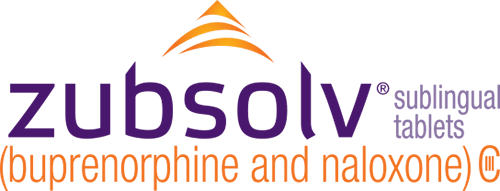

Practitioner Locator
Are you listed in SAMHSA’s Practitioner Locator?
Check Now

You will be directly linked to the Substance Abuse and Mental Health Services Administration (SAMHSA) Buprenorphine Practitioner Locator.
SAMHSA collects information on thousands of state-licensed providers who specialize in treating substance use disorders, addictions, and mental illness.
Actor portrayal
Videos to help start your patient's treatment journey with ZUBSOLV
x
Terms and Conditions
All eligible healthcare providers, who are waivered under DATA 2000, are invited to participate in the Orexo US, Inc. Find a Healthcare Provider locator. There is no fee or cost for your participation in or use of the locator. Qualifying criteria are listed below:
- You must be waivered under DATA 2000, and continue to comply with its rules and regulations
- Your medical license must be active and in good standing
- You must have a unique identifier, issued by the Drug Enforcement Administration (DEA) that is active and in good standing, and that shows you are waivered under DATA 2000
- You have agreed to these Terms and Conditions and have agreed to participate in writing on the downloadable Agreement
- You agree that if, at any time, you no longer meet all the qualifying criteria it is your responsibility to notify Orexo immediately, in writing, so that Orexo may remove your name from the Find a Healthcare Provider locator
You also acknowledge that Orexo US, Inc. does not track prescription volume or value based on referrals through its Find a Healthcare Provider locator.
You may request to be removed from the Find a Healthcare Provider locator and Orexo US, Inc. retains the right to remove healthcare providers from the Find a Healthcare Provider locator for any of the following reasons:
- Your contact information is no longer valid
- Your DATA 2000 waiver or medical license is suspended, revoked, or restricted
- Your are not in compliance with DATA 2000 and its implementing regulations
- Orexo US, Inc. has information or determines that you may be engaging in the unsafe prescribing of our product(s)
Limitation of Orexo US, Inc. Liabilities: This Find a Healthcare Provider locator is compiled for informational purposes only. No fees have been or will be paid or received in exchange for participation in this locator. In no event shall Orexo US, Inc. or its employees or agents be liable for any damages resulting from or related to the Find a Healthcare Provider locator. All providers and other users of this information agree that the use of this locator is at their own risk.
Orexo US, Inc. is not responsible for the medical care or advice given by any participating healthcare provider. Inclusion in the Orexo US, Inc. Find a Healthcare Provider locator does not represent an endorsement, referral, or recommendation from Orexo US, Inc. Moreover, participating in this locator does not endorse the use of any Orexo US, Inc. product(s).
ZUBSOLV is a licensed trademark of Orexo US, Inc.
Indication
ZUBSOLV® (buprenorphine and naloxone) sublingual tablet (CIII) is indicated for the treatment of opioid dependence. ZUBSOLV should be used as part of a complete treatment plan that includes counseling and psychosocial support.
Important Safety Information
Contraindications
- ZUBSOLV is contraindicated in patients with a history of hypersensitivity to buprenorphine or naloxone, as serious adverse reactions, including anaphylactic shock, have been reported.
Warnings and Precautions
- Addiction, Abuse, and Misuse: Buprenorphine can be abused in a similar manner to other opioids. Monitor patients for conditions indicative of diversion or progression of opioid dependence and addictive behaviors. Multiple refills should not be prescribed early in treatment or without appropriate patient follow-up visits.
- Risk of Life-Threatening Respiratory and Central Nervous System (CNS) Depression: Life-threatening respiratory depression and death have occurred in association with buprenorphine use. Warn patients of the potential danger of self-administration of benzodiazepines or other CNS depressants while under treatment with ZUBSOLV.
- Patient Access to Naloxone for the Emergency Treatment of Opioid Overdose: Strongly consider prescribing naloxone for the emergency treatment of opioid overdose, both when initiating and renewing treatment with ZUBSOLV, and consider prescribing naloxone if the patient has household members (including children) or other close contacts at risk for accidental ingestion or opioid overdose.
- Advise patients and caregivers that naloxone may also be administered for a known or suspected overdose with ZUBSOLV itself.
- Educate patients and caregivers on how to recognize respiratory depression, and if naloxone is prescribed, how to treat with naloxone. Emphasize the importance of calling 911 or getting emergency help, even if naloxone is administered.
- Managing Risks from Concomitant Use of Benzodiazepines or Other CNS Depressants: Concomitant use of buprenorphine and benzodiazepines or other CNS depressants increases the risk of adverse reactions including overdose and death. As a routine part of orientation to buprenorphine treatment, educate patients about the risks of concomitant use of benzodiazepines, sedatives, opioid analgesics, and alcohol. Develop strategies to manage use of prescribed or illicit benzodiazepines or other CNS depressants at initiation of buprenorphine treatment, or if it emerges as a concern during treatment.
- Before co-prescribing benzodiazepines, ensure that patients are properly diagnosed and consider alternative treatments to address anxiety or insomnia.
- Take measures to confirm that patients are taking their medication as prescribed and are not diverting or supplementing with illicit drugs, including toxicology screening to test for prescribed and illicit benzodiazepines.
- Unintentional Pediatric Exposure: Store ZUBSOLV safely out of the sight and reach of children. Buprenorphine can cause severe, possibly fatal respiratory depression in children.
- Neonatal Opioid Withdrawal Syndrome (NOWS): Neonatal opioid withdrawal syndrome (NOWS) is an expected and treatable outcome of prolonged use of opioids during pregnancy.
- Adrenal Insufficiency: If diagnosed, treat with physiologic replacement of corticosteroids, and wean patients off of the opioid.
- Risk of Opioid Withdrawal with Abrupt Discontinuation: If treatment is temporarily interrupted or discontinued, monitor patients for withdrawal and treat appropriately.
- Risk of Hepatitis; Hepatic Events: Monitor liver function tests prior to initiation and during treatment and evaluate suspected hepatic events.
- Precipitation of Opioid Withdrawal Signs and Symptoms: An opioid withdrawal syndrome is likely to occur with parenteral misuse of ZUBSOLV by individuals physically dependent on full opioid agonists or by sublingual administration before the agonist effects of other opioids have subsided.
- Risk of Overdose in Opioid-Naïve Patients: ZUBSOLV is not appropriate as an analgesic. There have been reported deaths of opioid-naïve individuals who received a 2-mg sublingual dose of buprenorphine.
- Dental Adverse Events: Cases of dental caries, some severe (i.e., tooth fracture, tooth loss), have been reported following the use of transmucosal buprenorphine-containing products. Educate patients to seek dental care and strategies to maintain or improve oral health while being treated with ZUBSOLV.
- QTc Prolongation: Thorough QT studies with buprenorphine products have demonstrated QT prolongation ≤15 msec. The risk of combining buprenorphine with other QT prolonging agents is not known. Consider these observations in clinical decisions when prescribing ZUBSOLV to patients with QT-related risk factors.
Use in Specific Populations
- Lactation: Buprenorphine passes into mother’s milk.
- Geriatric Patients: Monitor for sedation and respiratory depression.
- Moderate and Severe Hepatic Impairment: Buprenorphine/naloxone products are not recommended in patients with severe hepatic impairment and may not be appropriate for patients with moderate hepatic impairment.
Adverse Reactions & Drug Interactions
- Adverse events commonly observed with the sublingual administration of ZUBSOLV are headache, nausea, vomiting, hyperhidrosis, constipation, signs and symptoms of withdrawal, insomnia, pain, and peripheral edema.
- Benzodiazepines: Use caution in prescribing ZUBSOLV for patients receiving benzodiazepines or other CNS depressants and warn patients against concomitant self-administration/misuse.
- CYP3A4 Inhibitors and Inducers: Monitor patients starting or ending CYP3A4 inhibitors or inducers for potential over or under dosing.
- Antiretrovirals: Patients who are on chronic buprenorphine treatment should have their dose monitored if NNRTIs are added to their treatment regimen. Monitor patients taking buprenorphine and atazanavir with and without ritonavir, and reduce dose of buprenorphine if warranted.
- Serotonergic Drugs: Concomitant use may result in serotonin syndrome. Discontinue ZUBSOLV if serotonin syndrome is suspected.
This is not a complete list of potential adverse events associated with buprenorphine/naloxone tablets. For additional safety information, please see Full Prescribing Information
Indication
See More
ZUBSOLV (buprenorphine and naloxone) sublingual tablet (CIII) is indicated for the treatment of opioid dependence. ZUBSOLV should be used as part of a complete treatment plan that includes counseling and psychosocial support.
Important Safety Information
Contraindications
- ZUBSOLV is contraindicated in patients with a history of hypersensitivity to buprenorphine or naloxone, as serious adverse reactions, including anaphylactic shock, have been reported.
This site is intended for residents of the United States.
ZUBSOLV is a licensed trademark of Orexo US, Inc.
Other trademarks, registered or otherwise, are the property of their respective owner(s).
Distributed by Orexo US, Inc., Morristown, NJ.
This site is sponsored by Orexo US, Inc.
© 2025 Orexo US, Inc. All Rights Reserved.